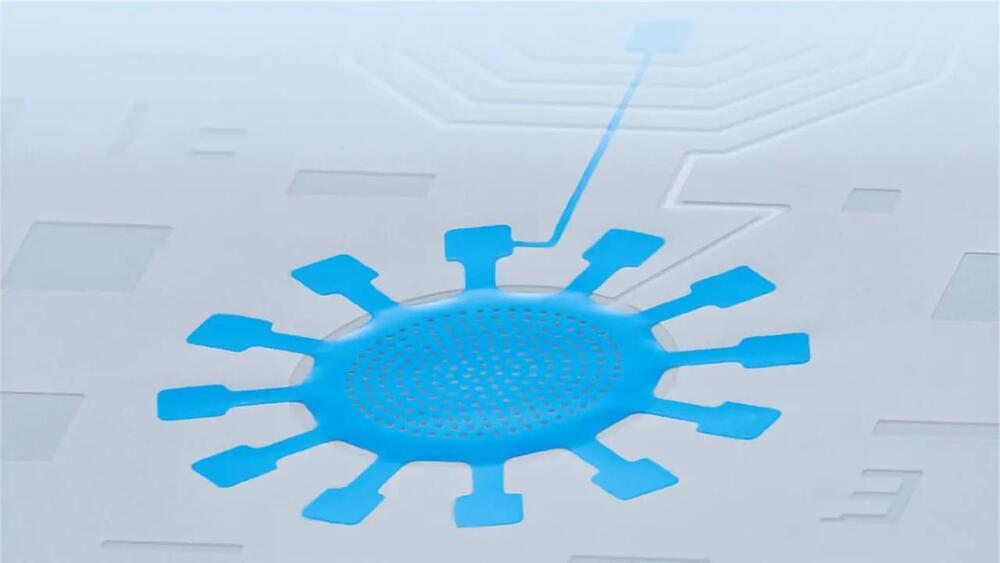Rigetti has launched its fourth-generation architecture with a single chip 84qubit quantum processor that can scale to larger systems.


Blog post with show notes, audio player, and transcript: https://www.preposterousuniverse.com/podcast/2018/12/03/epis…imulation/
Patreon: https://www.patreon.com/seanmcarroll.
The “Easy Problems” of consciousness have to do with how the brain takes in information, thinks about it, and turns it into action. The “Hard Problem,” on the other hand, is the task of explaining our individual, subjective, first-person experiences of the world. What is it like to be me, rather than someone else? Everyone agrees that the Easy Problems are hard; some people think the Hard Problem is almost impossible, while others think it’s pretty easy. Today’s guest, David Chalmers, is arguably the leading philosopher of consciousness working today, and the one who coined the phrase “the Hard Problem,” as well as proposing the philosophical zombie thought experiment. Recently he has been taking seriously the notion of panpsychism. We talk about these knotty issues (about which we deeply disagree), but also spend some time on the possibility that we live in a computer simulation. Would simulated lives be “real”? (There we agree — yes they would.)
David Chalmers got his Ph.D. from Indiana University working under Douglas Hoftstadter. He is currently University Professor of Philosophy and Neural Science at New York University and co-director of the Center for Mind, Brain, and Consciousness. He is a fellow of the Australian Academy of Humanities, the Academy of Social Sciences in Australia, and the American Academy of Arts and Sciences. Among his books are The Conscious Mind: In Search of a Fundamental Theory, The Character of Consciousness, and Constructing the World. He and David Bourget founded the PhilPapers project.
Please check out Numerai — our sponsor @
http://numer.ai/mlst.
Patreon: https://www.patreon.com/mlst.
Discord: https://discord.gg/ESrGqhf5CB
The Second Law: Resolving the Mystery of the Second Law of Thermodynamics.
Buy Stephen’s book here — https://tinyurl.com/2jj2t9wa.
The Language Game: How Improvisation Created Language and Changed the World by Morten H. Christiansen and Nick Chater.
Buy here: https://tinyurl.com/35bvs8be.
Stephen Wolfram starts by discussing the second law of thermodynamics — the idea that entropy, or disorder, tends to increase over time. He talks about how this law seems intuitively true, but has been difficult to prove. Wolfram outlines his decades-long quest to fully understand the second law, including failed early attempts to simulate particles mixing as a 12-year-old. He explains how irreversibility arises from the computational irreducibility of underlying physical processes coupled with our limited ability as observers to do the computations needed to “decrypt” the microscopic details.
The conversation then shifts to discussing language and how concepts allow us to communicate shared ideas between minds positioned in different parts of “rule space.” Wolfram talks about the successes and limitations of using large language models to generate Wolfram Language code from natural language prompts. He sees it as a useful tool for getting started programming, but one still needs human refinement.

Scientists at EPFL have developed a superconducting circuit optomechanical platform that demonstrates ultra-low quantum decoherence and high-fidelity quantum control. Their groundbreaking work with a “vacuum-gap drumhead capacitor” has led to the longest quantum state lifetime in a mechanical oscillator ever achieved, paving the way for new applications in quantum computing.
Performing computation using quantum-mechanical phenomena such as superposition and entanglement.

Tesla says it will build new “1st of its kind” data centers. The automaker is hiring staff for it and snapping up some existing data centers.
The data center business is now massive with a market size of more than $250 billion.
Most of the biggest companies in the world, which are known to consumers for other products, are in it, like Amazon Web Services (AWS), Microsoft Azure, Google Cloud Platform (GCP), and Meta Platforms (Facebook).

The more we like our ideas, the faster we give them shape. But to be creative, we need to focus on out-of-the-box thinking. This is what Alizée Lopez-Persem and Emmanuelle Volle, Inserm researchers at Paris Brain Institute, showed in a new study published in American Psychologist.
Using a behavioral study and a computational model to replicate the different components of the creative process, the researchers explain how individual preferences influence the speed of the emergence of new ideas and their degree of creativity. These preferences also determine which ideas we choose to exploit and communicate to others.
What drives us to develop new ideas rather than settling for standard methods and processes? What triggers the desire to innovate at the risk of sacrificing time, energy, and reputation for a resounding failure? Creativity is based on complex mechanisms that we are only beginning to understand and in which motivation plays a central role. But pursuing a goal is not enough to explain why we favor some ideas over others and whether that choice benefits the success of our actions.

Over the past decade, scientists have made tremendous progress in generating quantum phenomena in mechanical systems. What seemed impossible only fifteen years ago has now become a reality, as researchers successfully create quantum states in macroscopic mechanical objects.
By coupling these mechanical oscillators to light photons—known as “optomechanical systems”—scientists have been able to cool them down to their lowest energy level close to the quantum limit, “squeeze them” to reduce their vibrations even further, and entangle them with each other. These advancements have opened up new opportunities in quantum sensing, compact storage in quantum computing, fundamental tests of quantum gravity, and even in the search for dark matter.
In order to efficiently operate optomechanical systems in the quantum regime, scientists face a dilemma. On one hand, the mechanical oscillators must be properly isolated from their environment to minimize energy loss; on the other hand, they must be well-coupled to other physical systems such as electromagnetic resonators to control them.

Sandia’s 20 year experience in building and testing ion traps has culminated in its latest offering: the Enchilada Trap.
Sandia National Laboratories revealed the Enchilada Trap, a groundbreaking ion trap central to some quantum computers, in a press release.
This innovative device promises to reshape the landscape of quantum computing, providing researchers with a potent tool to explore the experimental and transformative field of quantum computation.
This research topic consists of 148 articles on various aspects of brain augmentation contributed by more than 600 authors. At the time of writing, the articles have been viewed online more than 1.3 million times and received plentiful citations in the scientific literature. The topic won the 2017 Frontiers Spotlight Award.
The topic theme, “Augmentation of brain function,” is an umbrella term for the approaches from different disciplines, aimed at the improvement of brain performance in both healthy people and patients suffering from neurological disabilities. Functions of the brain that scientists hope to augment belong to sensory, motor and cognitive domains. Brain enhancements could be achieved pharmacologically or using neurostimulation. Functional improvements can be also achieved with brain training techniques that employ modern technologies like computer games and virtual reality. Furthermore, brain performance can be augmented using brain-machine interfaces (BMIs), the pathways that connect neuronal circuits to external assistive devices, such as limb prostheses, exoskeletons, and communication aids. In addition to sending commands to external devices, BMIs can enable bidirectional communications, where artificial sensory signals are delivered to the brain while information is being decoded from neural recordings.
Even though many of the brain-augmenting ideas sound like science fiction, the topic authors feel optimistic about most of them. The overall consensus is that brain performance can be improved with artificial components, and this approach will lead to practical applications in the not-too-distant future. Many of the techniques covered in the topic, for example BMIs and noninvasive stimulation, have already experienced an explosive development. While expectations are high for the augmentation approaches, philosophers are warning about the ethical issues related to technologies that interfere with the mind, possibly in unpredictable ways. Although some of these concerns seem far-fetched, it is important that ethical standards are kept high as these revolutionary brain-augmenting methods are being developed.

Quantum computing, just like traditional computing, requires a method to store the information it uses and processes. In the computer you’re using right now, information—whether it be photos of your dog, a reminder about a friend’s birthday, or the words you’re typing into your browser’s address bar—must be stored somewhere. Quantum computing, a relatively new field, is still exploring where and how to store quantum information.
In a paper published recently in the journal Nature Physics
As the name implies, Nature Physics is a peer-reviewed, scientific journal covering physics and is published by Nature Research. It was first published in October 2005 and its monthly coverage includes articles, letters, reviews, research highlights, news and views, commentaries, book reviews, and correspondence.